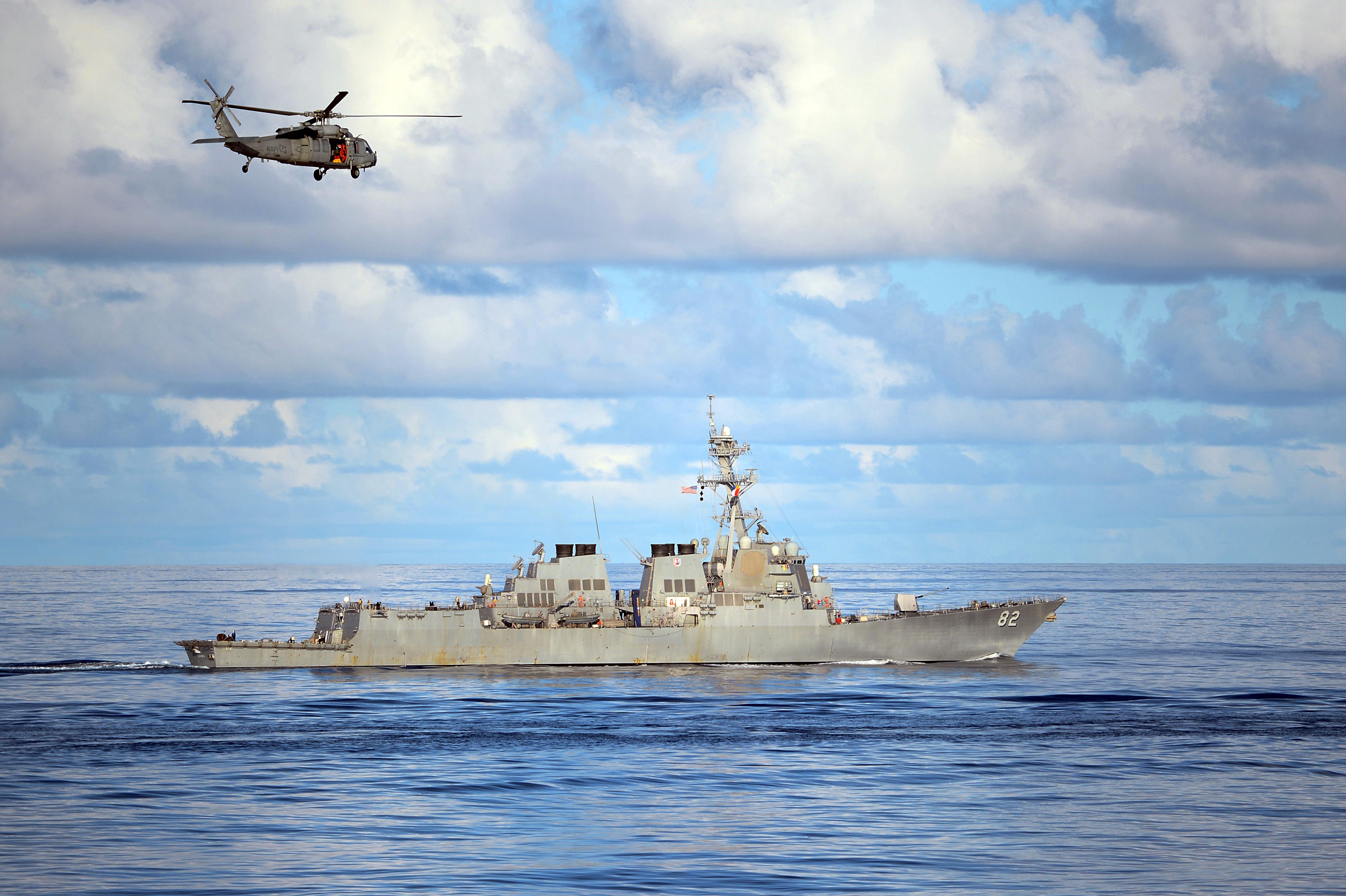
Lockheed Martin would like to accelerate both its Aegis cruiser and destroyer modernization efforts and its AN/SPY-1 radar refurbishment program, in the hope of closing a “capability capacity gap” the surface navy faces, the company’s director of Aegis U.S. Navy Programs said Monday.
Jim Sheridan told reporters that “the Navy faces a significant integrated air and missile defense capability capacity gap” – and solving that gap doesn’t just mean more ships, but more ships with the right combat capabilities onboard. He said he believes a solution to this problem is to accelerate modernization efforts on cruisers and various flights of the Arleigh Burke-class destroyers.
“There’s talk about increasing the size of the fleet, and that’s great, we’ll see where that actually goes,” he said.
“But it’s not just numbers, it’s the numbers of ships with the right capability. So I believe we’re really facing a capability capacity gap. How is it that we can transition more of these integrated air and missile defense-capable ships, be it destroyers or cruisers, be it through modernization or new construction; how can we get more of those ships out there?”
Aegis Combat System modernizations began in 2009 for guided-missile cruisers and in 2010 for guided-missile destroyer, he said, and “I’d like to see the pace of the modernizations pick up a little bit.” The Navy had planned to modernize all 62 in-service Flight I, II and IIA destroyers but in its Fiscal Year 2015 budget submission scaled back the Flight I and II modernization plans and canceled five Flight IIA upgrades altogether due to budget constraints. Cruiser modernization efforts were also disrupted due to spending caps; the Navy wanted to save money by laying up 11 of its 22 cruisers and modernizing them down the road, whereas Congress has pushed a plan that would force two ship modernizations a year.
Sheridan said Lockheed Martin, its vendors and the repair shipyards have the capacity to increase modernization rates for the two ship classes.
“I think if you were to ask just about anybody, if the resources were there could you increase production rate? Yeah, absolutely,” he said.
“I think if you went to the modernization shipyards, could you deal with more ships? Absolutely. Could (Lockheed Martin’s facility in) Moorestown deal with increased production to support more ships? Yeah, absolutely. Our head of production in Moorestown always reminds me that back in the day he was building for two cruisers per year and three destroyers per year, so that’s five sets (of Aegis Combat System equipment), so there’s no reason to believe that given the right resources” those parties couldn’t increase their production rates again.
In another effort to bring more capability to 21 large surface combatants, Lockheed Martin is upgrading the SPY-1 air search radar on the Navy’s Flight I and II Arleigh Burke-class destroyers. That refurbishment effort involves adding a low-noise amplifier to the existing antenna, and marrying that equipment to the Aegis Baseline 5.4 Integrated Air and Missile Defense combat system software.
The refurbishment effort adds a “significant integrated air and missile defense improvement in an affordable near-term path to improve the reliability, maintainability as well as the capability of those platforms,” Sheridan said.
“I believe we should accelerate the combined [U.S. Navy]/Missile Defense Agency SPY refurbishment program of record to upgrade the sensor and combat system performance of several of our Flight I and Flight II destroyers through the installation of SPY-1 low-noise amplifiers and … Baseline 5.4. This combination would yield integrated air and missile defense capability and dramatic improvements to every applicable performance metric.”
“I’m suggesting it should be accelerated,” he made clear.
Additionally, Sheridan said he hoped the Navy would consider an additional upgrade to its Flight IIA DDGs, swapping the current radars to a solid state SPY-1 radar that was developed for the MDA’s Long Range Discrimination Radar.
“We should establish the Navy requirement or program of record to install solid state SPY-1 radars to select Flight IIA destroyers,” he said, noting as many as 36 could be upgraded.
“These ships comprise the core of the surface fleet deep into the 2040s, and this material radar upgrade is essential to the current and future relevance versus complex and developing threats.”
The Navy already plans to put a solid state radar, the Raytheon-built SPY-6 Air and Missile Defense Radar, on its Flight III DDGs, and Sheridan said the solid state SPY-1 addition would have the potential to touch the largest number of ships and would bring “pretty significant” capability increases to each hull that received the new radar. He added that the solid state SPY-1 radar upgrade – which would require replacing the antenna and installing a multi-mission signal processor on the back end – would use the same subassembly and therefore leverage the same logistics as the MDA’s LRDR.





